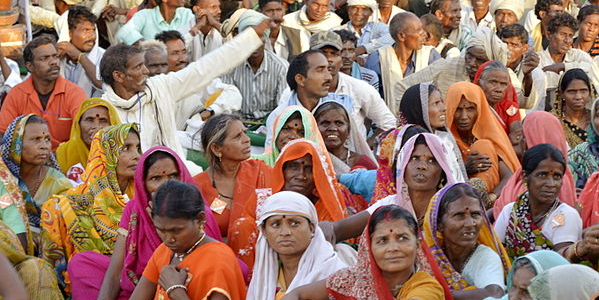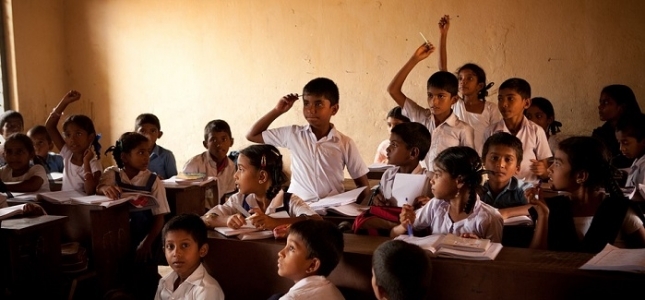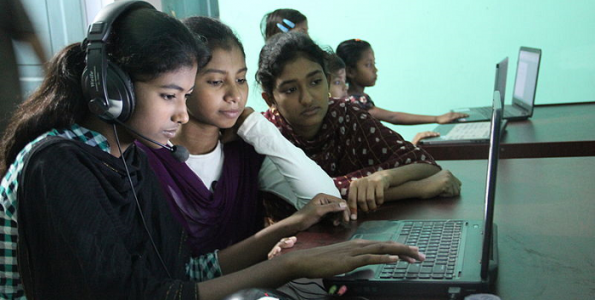The focus of education policymakers on outcomes, especially learning outcomes, is steadily rising. This is the fourth blog in a blog series to discuss paradigm shifts in the field of assessments in India’s public education system.
2017 was an important year in the field of public education in India. Following the 64th meeting of the Central Advisory Board on Education (CABE) held in October 2016, the Ministry of Human Resource Development (MHRD) recommended two major policy changes, through proposed amendments to the Right to Education (RTE) Act (2009).
These include the introduction of class-wise, subject-wise, learning outcomes for all elementary classes under the RTE Act; and secondly, an amendment to modify Section 16 of the Act by scrapping the No Detention Policy (NDP) for students of grades 5 and 8. The Continuous Comprehensive Evaluation (CCE) pattern of evaluation, mentioned under section 29 of the RTE Act, is also going to be modified, following the decision of the Central Board of Secondary Education to re-introduce board examinations and scrap the policy for grades 9 and 10.
Together, these decisions are poised to have significant implications on how teaching-learning and assessments are viewed and conducted in India. In this article, we shed light on the possible contradictions in these policy changes. Further, we argue that without formally changing the indicators used to hold teachers and schools accountable for student learning and addressing existing resource constraints, it would be hard to expect school actors to change their behaviour vis-a-vis teaching and assessment.
Recent amendments to the RTE Act
Learning Outcomes (LOs) for students of classes 1-8 across all schools in the country were officially codified in the RTE on 22nd February 2017, on the basis of a draft document prepared by the NCERT, subject to state-specific adaptation. Simply put, these are assessment standards indicating the expected level of learning that children should have achieved as they move from one grade to another. What is significant about these outcomes from a policy perspective is that they seek to provide a uniform metric for assessing children’s conceptual understanding of different subjects, by testing their capacity to apply, construct, and build upon knowledge gained inside classrooms.
In the prevailing system, students are primarily tested on retention of facts rather than understanding. By pushing for LOs, the Ministry of Human Resource Development (MHRD) is attempting to fulfil the original vision of the RTE Act of making teaching more student-centric and breaking the cycle of teaching-to-the-test.
On the other hand, there are the decisions to modify the NDP and CCE mode of evaluation. One rationale behind this was to change the way assessments have been traditionally viewed. These policies were expected to promote an environment where students were free from fear, trauma and anxiety induced by examinations, and possibilities of detention and expulsion. Continuous assessments were expected to aid the teacher in understanding individual student progress and tailor teaching methods to suit children’s needs using a mix of activity-based and written tests.
However, the implementation of these policies was not smooth. It was argued that students were disinterested in learning because of the assurance of automatic promotion, absenteeism had increased, and teachers themselves had become lackadaisical about completing course syllabi because of these policies. Moreover, the individual attention the CCE model of assessments demanded was also unfeasible owing to resource constraints in public schools. As a result, student dropout rates increased drastically at the secondary school level, (NDP applies to grades 1 to 8) and the filling of CCE report cards became a purely mechanical exercise rather than the comprehensive assessment it was expected to be. The status report of the sub-committee set up by CABE to review the implementation of CCE in the context of NDP was presented at the 65th meeting of CABE in January 2018.
Implications of the amendments
The recent developments have given rise to important questions and concerns. Proponents of Sections 16 and 29 argue that the rationale for introducing both NDP and the CCE was sound as it was based on extensive research on the negative impact of detaining students and prioritising test scores over learning. It is the education system which is to be blamed for not preparing schools adequately – be it addressing the resource gaps, adequately training teachers, orienting parents and other stakeholders to the changes, or the design of the CCE assessment tools in themselves which are considered cumbersome by many. This begs us to ask whether the understanding and degree of preparedness is higher now than before as learning outcomes are being introduced in states.
By scrapping the NDP and reverting to the old assessment method and pattern, would it not bring back fear in students, reinforce old modes of instruction and de-incentivise teachers from ensuring students learn with understanding than obsess over test scores? An underlying assumption of the criticisms levelled at the NDP and CCE is that students can learn only under the threat of failure. If that is the case, there is a need to promote an altered understanding of teaching-learning rather than to re-introduce binaries of pass-fail that are bound to strengthen such notions. This would also lay further stress on teachers to focus even more on ensuring high passing rates, on which their performance would be judged, rather than on ensuring that students have learned what is being taught in class.
Question paper setting patterns have also not undergone changes to align these with the goal of testing students for understanding. The RTE Act and even the NCF is largely silent on what it would take to reform test paper setting patterns. In light of the learning outcomes, it becomes more important to train teachers on how to prepare test papers that carry different levels of questions rather than testing students on facts alone. In fact, the purpose of setting learning outcomes would be defeated if test papers do not see reforms in a context where written tests are being re-prioritised.
Next to the written test and test scores, the syllabus is another important feature of education for school actors. Even during the era of NDP and CCE, syllabus completion continued to be a constant for schools. The syllabus acts as a checkpoint for teachers to plan their lessons and as an indicator of their performance. In the limited time teachers get to teach and the wide variation in student learning levels within classrooms, syllabus completion often means teachers end up racing through lessons. In this scenario, it becomes easy to see why students continue to be primarily tested on fact-based questions.
At the Accountability Initiative, our research repeatedly points to the fact that it is naïve to expect school actors to change their behaviour while their supervisors continue to effectively hold them accountable for pass rates and syllabi completion in the name of assessing the quality of teaching-learning. As mentioned earlier, the education system was and continues to cohere around tests, syllabus completion, passing rates.
To conclude, the recent policy changes clearly demonstrates that debates around what are the best means to teach and assess students are far from settled. This, however, does not take away from the urgency of introducing critical reforms in assessment patterns, accountability structures in the education department, improving capacity and addressing resource gaps in order to implement the RTE Act in both letter and spirit. Without these reforms, there is a real danger of reducing LOs to just another marker in report cards, upholding the status quo vis a vis teaching-learning and assessments.
This article originally appeared in IAPS Dialogue.












